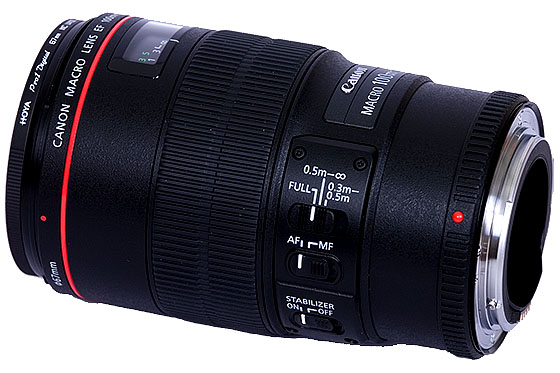Canon EF 100mm f/2.8L IS Macro Lens Review
Video Review
You can watch my video review of this lens on YouTube at the following link:
Review Of The Canon EF 100mm f/2.8L IS Macro Lens
Product Images
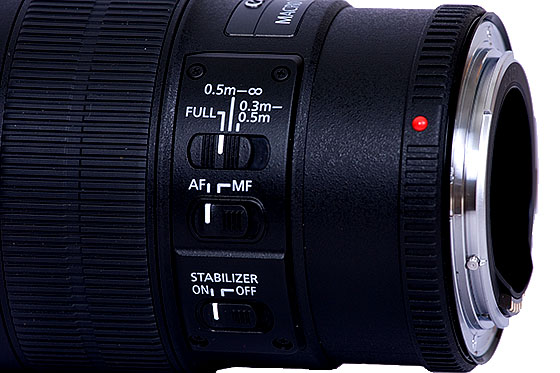
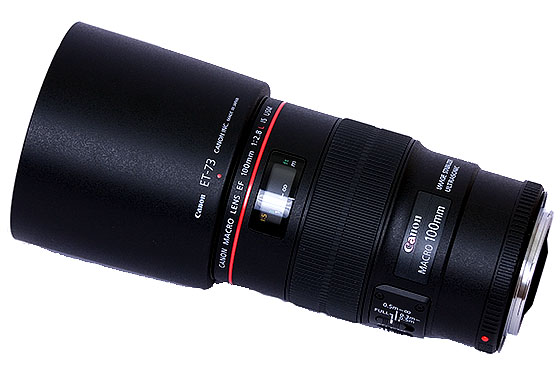
Sample Images
A selection of photos taken in Thailand with the Canon EF 100mm f/2.8L IS Macro lens.

Canon EF 100mm f/2.8L IS Macro | Canon EOS M6 | Canon EF-EOS M Mount Adapter | ISO:800 | Aperture: f/8 | Shutter Speed: 1/60s | Canon 430EX II | Canon ST-E2
The next image is a composite of eight images focused at slightly different points that were focus-stacked using Photoshop CS5.

Canon EF 100mm f/2.8L IS Macro | Canon 12mm + 25mm Extension Tubes | Canon EOS 40D | ISO:200 | Aperture: f/11 | Shutter Speed: 1/60s | Electra Studio Lighting
The next image isn't macro, but even using my old 40D you can see how sharp this lens is and also that the bokeh is smooth and pleasant.

Canon EF 100mm f/2.8L IS Macro | Canon EOS 40D | ISO:100 | Aperture: f/6.3 | Shutter Speed: 1/125s | Canon 550EX II
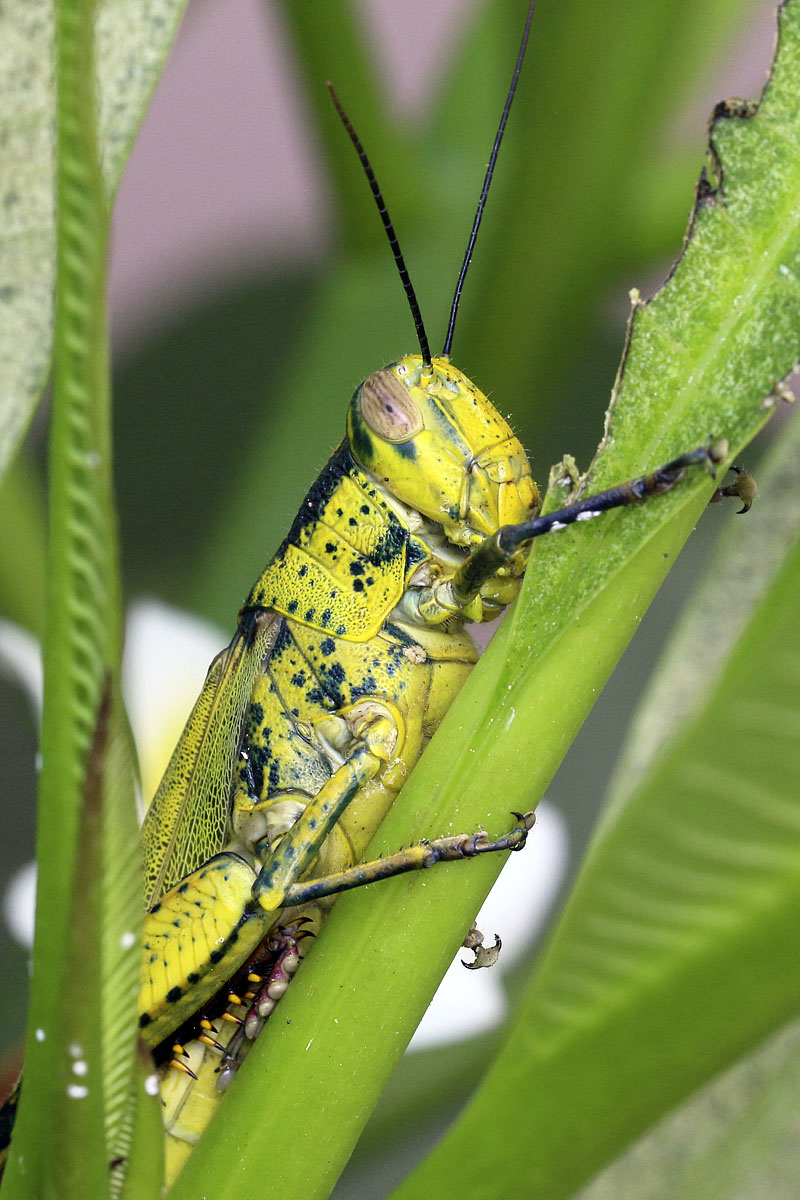
Canon EF 100mm f/2.8L IS Macro | Canon EOS M | Canon EF-EOS M Mount Adapter | ISO:800 | Aperture: f/11 | Shutter Speed: 1/125s
User Impressions
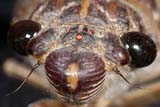 I've written about the inconsistent focusing problems I had with the Canon EF 100mm f/2.8 Macro lens that I have now sold.
I've written about the inconsistent focusing problems I had with the Canon EF 100mm f/2.8 Macro lens that I have now sold.
It was a sad day when I sold it but I just couldn't afford to use a lens that I didn't trust.
I think that good macro shots are interesting, and if you can use the same lens as a mid-telephoto to get sharp portraits in low light, then even better.
On paper it was exactly the right lens for my needs, but in reality it just didn't work out.
I had something of a dilemma deciding what to do next. Was there a problem with my lens, and would buying another copy fix the problem? I didn't really want to take that chance, and also I think the obsession with 'bad copies' of lenses is overstated.
The EF-S 60mm f/2.8 Macro looked like an interesting lens and when I looked at sample images they looked impressive - a lot better than most sample images taken with the EF 100mm f/2.8 macro.
I knew it wouldn't work on a full-frame body but I had no plans to move to full-frame. The shorter focal length also meant less working distance. However, it might have been a more suitable focal length for portraits. I was tempted.
And then Canon solved my dilemma by announcing the EF 100mm f/2.8L IS Macro. It was perfect.
I have tried to avoid buying Canon EF-S Lenses, non-L lenses, zoom lenses with variable maximum apertures, and lenses without IS. My Canon EF-S 10-22mm was an exception to all these rules but it is quite a unique lens and there isn't an alternative for crop bodies.
The new EF 100mm f/2.8L IS Macro meant being able to get the macro lens of my choice without breaking any of these rules. It was a little expensive but I consider purchases like this to last many, many years, and so the cost was of little importance.
For its primary purpose (macro) it performs very well with or without extension tubes.
As a telephoto lens, results are pleasing regarding sharpness, colour, contrast and bokeh. I have to admit though, that my Canon EF 85mm f/1.8 (at a fraction of the price) performs just as well.
If you want a good all-round lens for macro and telephoto, this is an excellent choice. However, if you think you will be using it mainly for telephoto without doing much macro work there are cheaper lenses that will perform equally as well.
Macro Lighting
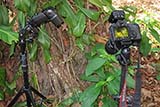 In most cases, macro work needs some additional lighting for several reasons. Firstly, as your subject gets closer to the lens, you lose light. Secondly, working close means a very narrow depth of field.
In most cases, macro work needs some additional lighting for several reasons. Firstly, as your subject gets closer to the lens, you lose light. Secondly, working close means a very narrow depth of field.
To increase the depth of field means reducing the aperture size ... which means less light. Thirdly, if you are shooting live subjects that move, or subjects outdoors that are being moved by the wind, you need a relatively fast shutter speed.
If you shoot stationary objects indoors you can use a tripod and long shutter speeds so lighting isn't so important, but outdoors it is.
It's possible to use a hotshoe mounted flash but this method won't give great light. Canon make two flashes designed for macro work - the MR-14EX Ring Lite and the MT-24EX Twin Lite. I haven't used either. The latter appears to give better light but it is quite expensive.
I may go down this path later but for the time being I am using equipment that I already own - my 550EX or 430EX II Speedlite triggered off-camera by my ST-E2. Sometimes I use a lightstand and sometimes I hand-hold the flash. It may not be the perfect set up but it seems to work reasonably well.
Image Stabilisation
One of the big selling points with this lens was a new IS system specially designed for macro. This was the first lens to use Canon's new Hybrid IS system, which was specially designed for macro lenses.
Previously, IS systems could only deal with angle camera shake. If you imagine shooting a subject from a distance, the back of the camera might stay where it is but the front of the lens moves up and down and right and left as you attempt to keep the subject in the viewfinder.
With macro photography the subject is very close and instead of the photographer turning the lens at an angle, the lens stays straight but shifts up and down and left and right (shift camera shake). This movement is different to angle camera shake, and this is what Hybrid IS is designed to deal with.
At 1:1 magnification the IS system provides two stops of magnification, at 1:2 magnification three stops, and with less magnification than this four stops.
If my macro subject is static I focus manually using a tripod and turn IS and AF off. The depth of field is so shallow with macro photography that AF doesn't always do what I want it to do and I appreciate the steadiness of using the camera on a tripod.
However, with things like insects - which have a tendency to fly away when you are composing your shot - speed is important and the use of AF and Hybrid IS allow you to photograph quickly.
The keeper rate is a lot lower hand-holding like this, but if you take enough photos there is a good chance that a few might be usable.
I don't always use the Hybrid IS on this lens, but it's useful to have.
Tripod Collar
Some Canon lenses I own have come with tripod collars (for example, Canon EF 400mm f/5.6L | Canon FD 300mm f/4), but not this one.
This lens isn't that long or that heavy, but using it with your camera body mounted on a tripod would make the combination quite heavy at the front and would probably put a lot of strain on the lens mount.
In that case it would probably be advisable to use a tripod collar. The problem with the Canon one, although I am sure the build quality is fantastic, is that it is expensive. In the States it is around $172.
A company called Vello makes one for around $50 and there are cheap Chinese knock-offs that you can buy for around $10.
If money is no object, go for the original Canon version, but as long as the third-party versions don't allow the lens to drop on the ground and don't damage the lens barrel they should be fine.
I don't actually have this dilemma because I now use an EOS M6 and when I use this lens I have to use the Canon EF-EOS M Mount Adapter. The adapter has a tripod mount and as this sits in front of the camera body the balance isn't actually too bad.
If I do buy a tripod collar in the future it will most likely be a cheap third-party version.
Focus Stacking
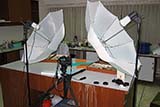 Focus stacking is to focus what HDR is to exposure. Multiple frames are taken at slightly different focus settings, and the results are combined with a software program.
Focus stacking is to focus what HDR is to exposure. Multiple frames are taken at slightly different focus settings, and the results are combined with a software program.
Using digital wizardry, this is one way of getting around the problem of having a very narrow depth of field with macro photography..
Previously I used a free shareware program called CombineZM, but now I find it easier just to use the photo merge feature in Photoshop CS5.
Conclusion
I had some major problems with the EF 100mm Macro, but this L version with IS is a massive improvement. It's an immensely sharp lens and the Hybrid IS is very useful to have.
If you need a macro lens of this focal length or just need a very sharp 100mm lens you probably won't be disappointed.
Would I Buy One Now?
This is a fantastic lens, but of all the lenses I own it is probably the lens that I use least. I find myself using the Canon EF 85mm f/1.8 a lot more, both for product photography and portraiture.
The EF 85mm f/1.8 is almost as sharp to my eyes, it is smaller and lighter and thus more manageable. It's also fast and I don't miss IS. When I do product photography I use a tripod and to reduce the minimum focusing distance with the EF 85mm f/1.8 I use extension tubes.
I am loathe to sell the EF 100mm f/2.8L IS macro because it is such an excellent lens, but I use it so little that I can't really justify keeping it. Maybe in the future I will suddenly start using it and fall in love with it again.
Regarding the answer to the question, I probably wouldn't buy it again now. My EF 85mm f/1.8 is close in focal length and I like using it. I am now invested in the EOS M system and if I wanted a dedicated macro lens I would buy the EF-M 28mm f/2.8 macro, which also has built-in macro lite LEDs.
Lens Details
Weight: 19oz; 600g
Filter Diameter: 67mm
Closest Focusing Distance: 0.99ft; 0.3m
Minimum Aperture: f/32
Maximum Aperture: f/2.8
Autofocus: Ring-Type Ultrasonic Motor
Serial Number: 1911073
Lens Code: UY0201
Date Manufactured: February 2010
Date Purchased: March 2010
Supplier: Chia Color Lab, Hat Yai, Thailand
Price: 34,900 Thai Baht
Lens Hood: ET-73 (included)
Soft Case: LP1219 (included)
Other Review Pages You May Be Interested In

